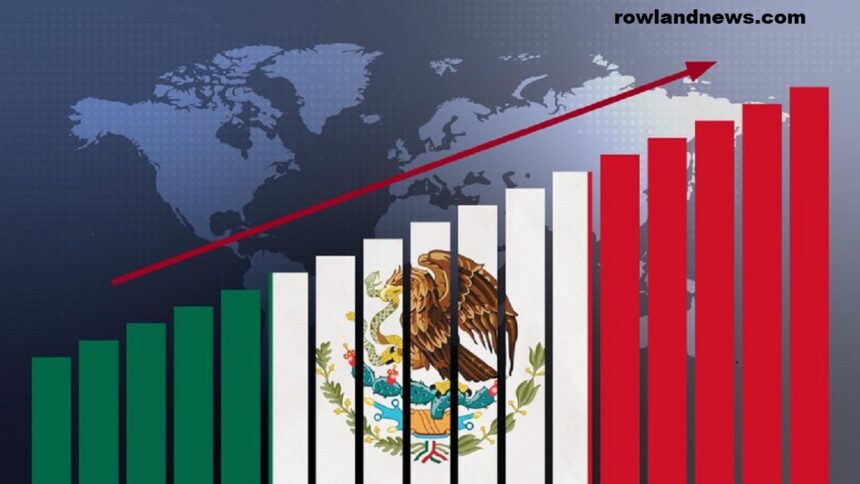Have you considered expanding your investments beyond your country’s borders? Perhaps you’re trying to diversify your portfolio or capitalize on emerging market opportunities. Then Mexico may be your next move. Due to its expanding economy, its abundant natural resources and close ties with America, the United States, investing in the Mexican market has become increasingly popular among investors from around the world.
However, if you’re unsure of what to do, don’t worry – you’re not alone. With this thorough, easy-to-follow guide, we’ll take you through all you have to learn about investing in Mexican securities, such as how it works in the first place, how you can get access to it, and the potential risks to stay clear of. Suppose you’re an aspiring newbie or an experienced investor looking to expand your portfolio to the next level. In that case, this guide will provide you with practical tips, as well as examples and advice to help you get started.
Why Consider Investing in Mexico?
Mexico is the second-largest economy and has a solid trade relationship with both the United States and Canada, due to the USMCA trade agreement (formerly NAFTA). Mexico has a youthful and growing population, a solid infrastructure and a flourishing manufacturing and export industry, including aerospace, automotive, as electronics.
The Mexican Stock Exchange, also known as Bolsa Mexicana de Valores (BMV), offers an opportunity to capitalize on this growth by investing in reputable Mexican firms such as América Móvil, Grupo Bimbo, and Cemex. In addition, with international investing platforms becoming more readily available and accessible, it’s no longer necessary to reside in Mexico to participate in the excitement.
Understanding the Mexican Stock Market
What Is the Bolsa Mexicana de Valores (BMV)?
BMV is Mexico’s principal stock exchange and is among the biggest of its kind in Latin America. It is located within Mexico City and is similar to the other major exchanges, such as the NYSE as well as the NASDAQ.
It lists a range of types of financial instruments, such as:
- Common stocks (acciones)
- Exchange-Traded Funds (ETFs)
- Real Estate Investment Trusts (REITs) are commonly referred to as FIBRAs within Mexico.
- Bonds are a type of debt instrument.
The most significant feature of BMV can be found in its IPC index (Indice de Precios y Cotizaciones), which is the Mexican equivalent to the S&P 500. It measures the growth of the 35 largest companies listed on the BMV.
How Safe Is It to Invest in Mexico?
Like other emerging markets, Mexico does not come without risks, such as currency volatility as well as political and regulatory system. However, Mexico has a strong financial system, as well as a solid central bank (Banco de México) with a steady increase in foreign investment.
According to the World Bank, Mexico’s financial institutions have improved substantially over the past decade, making it more convenient and secure for foreign investors to participate. Check out the investment rules and the rights of foreign investors on the Mexican Stock Exchange’s official website.
Ways to Invest in the Mexican Stock Market
We’ll now proceed to the next steps. There are many options to consider when investing in Mexican stocks, depending on your investment goals and location.
1. Use a Global Brokerage Platform
Several U.S.- and internationally-based brokers offer access to Mexican stocks directly or via American Depositary Receipts (ADRs). ADRs are U.S.-traded varieties of foreign stocks that make it simpler for foreign investors to purchase without having to convert currencies.
The most popular platforms that allow Mexican investments are:
- Interactive Brokers
- Charles Schwab
- TD Ameritrade
- eToro
- Fidelity
Certain brokers permit investors to purchase shares in the BMV on their own and some have ETFs or mutual funds that include Mexican holdings.
2. Invest in Mexico-Focused ETFs
If you prefer a straightforward, broad approach, ETFs are the best option. The funds comprise a mix of Mexican shares and can be traded like regular stocks. Below are a few common examples:
- iShares MSCI Mexico ETF (EWW) tracks medium- and large-cap Mexican businesses.
- Global MSCI SuperDividend EAFE ETF (EFAS) – Includes some Mexican dividend-paying stocks.
- First Trust Latin America AlphaDEX Fund (FLN) offers broader Latin American exposure, with a substantial focus on Mexico.
ETFs are an excellent option for novice investors or those who want to spread risk without selecting specific shares.
3. Create an account with the help of a Mexican Broker
If you’re looking for direct access to BMV, consider setting up an account with a Mexican brokerage near you. The most well-known brokerages are:
- GBM (Grupo Bursatil Mexicano)
- Actinver
- Citibanamex Casa de Bolsa
Be aware that opening a Mexican brokerage account for foreigners could require further documentation like a Tax ID, passport o, r evidence of residency. Certain brokers may also require you to visit a local branch in person, which could be a problem for international investors.
This route still offers the broadest possibility of accessing Mexican securities, including small-cap stocks and bonds that are not identified as ADRs.
What Types of Companies Can You Invest In?
Mexico is home to several blue-chip corporations as well as innovative companies that operate in a range of industries:
- Telecommunications America Movil (owned by Carlos Slim, one of the wealthiest people in the world)
- Consumer Goods (CPG) Grupo Bimbo (global baking giant), FEMSA (operates OXXO stores as well as Coca-Cola FEMSA)
- Construction & Materials – Cemex (multinational cement company)
- Financial Services – Banorte, Grupo Financiero Inbursa
- Real Estate – FIBRAs such as Fibra Uno (FUNO), which offer a dividend-based risk access to real estate for commercial purposes
They are fundamental to Mexico’s economy and provide an excellent export opportunity, which makes them attractive for long-term investors.
Read Also: How to Invest in the Vietnam Stock Market: A Complete Guide for Global Investors
Taxes and Fees to Know Before You Invest
Capital Gains Tax
If you are a foreign investor, you might be liable to tax on capital gains in Mexico, although many other countries (like Canada, the U.S.) are able to sign tax agreements with Mexico to prevent double taxation.
Before you invest, speak with a tax professional for a better understanding of how profits and dividends are taxed in Mexico as well as in your home country. It is the IRS as well as the Mexican SAT (Tax Administration Service), that provides more details on the tax laws of these countries.
Currency Exchange Risk
Making a direct investment in pesos may be vulnerable to fluctuations in the foreign exchange market. The sudden appreciation of the peso may decrease the amount you invest, as it will be converted to your home currency at a lower value. Consider securing your investments by selecting the USD currency of your choice, such as ADRs or ETFs, if you’re concerned about this.
Tips for Successful Investing in Mexico
Start Small and Diversify
Suppose you’re bullish about Mexico but don’t invest all your funds into one spot. Begin by making the smaller portion and then diversify your portfolio across different sectors and areas.
Keep an Eye on Political and Economic Trends
Mexican markets are vulnerable to shifts in political direction, trade negotiations, and fluctuations in international commodity prices. Follow the most reliable news and financial outlets, such as Reuters or Bloomberg, to keep up-to-date.
Use Dollar-Cost Averaging
If you aren’t planning to invest a massive amount at once, consider making smaller investments over time. This can help minimize the effects of market volatility.
Real-World Example: How Emily Built Her Mexico Investment Portfolio
Let’s suppose that Emily, a 35-year-old investor living in Austin, Texas, wants to include emerging markets in her IRA. Her first move was to buy the iShares MSCI Mexico ETF (EWW) via Fidelity, allocating 5% of the portfolio to it. In time, she expanded to the individual ADRs such as Grupo Bimbo and Cemex in addition to that, later she opened an account at GBM+, which is a Mexican brokerage that now provides an online onboarding service for international clients.
Over the past three years, her Mexican investment portfolio has grown consistently, and it is now more diversified than ever.
Conclusion: Mexico Could Be Your Next Smart Investment
The Mexican stock market presents an excellent opportunity for investors seeking to grow, diversify, or gain new market exposure. By conducting some research, utilizing the appropriate brokerage, and having a basic understanding of how markets work, anyone, including non-Mexicans, can start investing with confidence.
Mexico’s booming economy, solid connections to the region, and a growing middle class make it an ideal long-term investment. If you choose to go straight to the help of a Mexican broker or opt for the hands-off approach with ETFs, it is vital to begin in the right direction and remain consistent.
Ready to Explore Mexican Markets?
If you’ve always wanted ways to diversify your portfolio, now could be the perfect time to consider giving Mexico an examination. Take small steps at first, take your time, and research. If you require further assistance, consider consulting a financial professional. It’s not just clever, it’s also empowering.
Need help or have questions about selecting the best platform for your investment? Post your ideas in the comments section or sign up to receive more investment tips from around the world!
External Resources:














